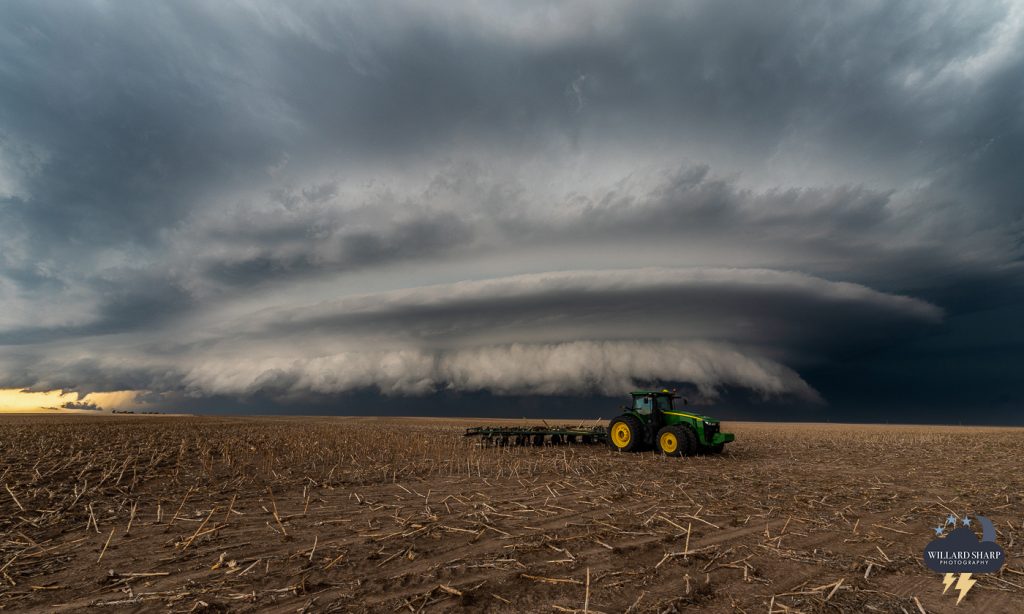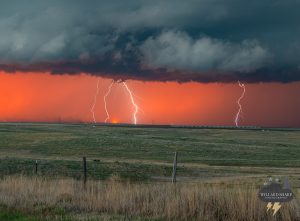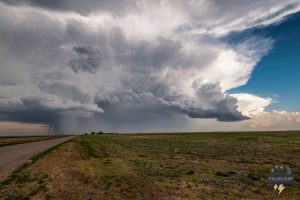After a long and hard winter for many folks spring is right around the corner. That means that severe weather season is rapidly approaching. For storm chasers this is our favorite time of year. Chasers, is your camera ready to take some awesome extreme weather photography? If yes, you need to know your camera gear inside and out. The worst thing that can happen is a photogenic tornado is occurring while you’re fumbling around trying to get your camera to cooperate. I’ll go over what camera gear I use and how I use to get the best shots possible.
My Equipment
In a previous blog I described the weather photography gear I bring along on a typical storm chase. Here’s a brief break down of that list:
- Nikon D850 camera
- Nikon D750 camera
- Wide angle lenses
- Nikon 24-70mm lens
- Tamron 15-30mm lens
- Nikon 105mm macro lens (I use this for tight lightning shots)
- Telefphoto lens
- Tamron 28-300mm lens
- Tamron 150-600mm lens (rarely use while chasing)
- Tripod
- Polarizing filters
- Pluto Trigger – For daytime lightning or remote trigger
- ThinkTank rain sleeve
- Smartphone with built in camera
Read the Manual!
The first most important thing that you need to master is YOUR camera! I know this sounds boring, but the best way to get familiar with your camera is to go through and read the manual. Some areas to concentrate on while going through the manual are: camera settings in aperture and manual mode, what does each button do and why, the focusing modes, back button focusing, how to change ISO, and how to update white balance. Practice each of these and become very familiar with them. This means getting out into the back yard and practice, practice, and practice some more. When photographing extreme weather the action takes place fast and you don’t have time to waste trying to figure out your camera when the action is unfolding in front of you.
Weather Resistance
Your camera and lenses should all be weather sealed and resistant. This will keep the elements such as rain and dust at bay. Remember, I said resistant rather than weather proof. If you shoot too long in the rain its going to ruin your equipment, so always keep this in mind. A little rain won’t hurt, but a bunch of rain will. Most DSLR’s and there lenses are manufactured today are weather resistant. Be careful with mirrorless cameras. While they are all the rage right now and rightfully so, the weather sealing for mirrorless cameras tends to be not as good as a traditional DSLR. I’ve talked to several chasers who’ve ruined a mirrorless camera because their equipment could not stand up to the elements thrown at them during a storm chase. If you do shoot while it’s raining consider purchasing a rain sleeve. They are relatively inexpensive and provide good protection for your camera if you’re shooting in the elements.
The Strategy
When it comes to extreme weather photography time is your enemy. Many tornadoes last 10 minutes or less so you don’t have time to be screwing around with your camera. As I mentioned earlier, you should practice with your camera and master all of its settings and options. Learn how to back button focus as opposed to holding the shutter button down halfway to focus. This works great for landscape and extreme weather photography. The focusing mode I use is single-servo or AF-S mode. I also tend to use the single focus point and will move that point around on as the scene dictates. Again, practice this before shooting extreme weather! Your camera should be setup already with the correct white balance, aperture, and ISO for the scene so all you have to do is compose your shot and take it. My typical settings while its daylight out is setting the camera to aperture priority, auto white balance, aperture f/8 to f11, ISO 100, auto ISO at shutter speed intervals of 1/100 second with an upper limit of ISO 800. As evening approaches you’ll need to bump the ISO up or lower the shutter speed. Or a combination of both. When that happens its time to get the tripod out.
Tripod
Only use the tripod when it’s getting to be dusk or its dark outside. I’ve seen chasers miss a shot because they were scrambling to get a tripod setup. As long as you’re shooting with a shutter faster than 1/100 of a second you’re not going to have a blurry image from camera shake. If your lens has image stabilization, make sure it’s turned on while hand holding the camera. I recommend using your tripod for video only during the day.
If you’re going to shoot lightning at night shut off the image stabilization. When you’re shooting for several seconds on a tripod the image stabilization will try to compensate for movement and that will distort your images.
Polarizing Filter
A polarizing filter on your lens is a great thing to use while shooting storms during the day. Polarizers help reduce reflections. By shooting with a polarizer, you can get sharper details in the clouds and bring out dramatic colors in the sky.
Smartphone
If I want to take a quick shot of a storm or tornado and get it out on social media I’ll use my smartphone for that. Its quick and easy. Plus smartphones today take great photos with the more advanced technology. Don’t forget to watermark that photo before it goes out on social media. I use iWatermark with my iPhone. It works great and its simple to use.
Practice
Remember, the key to becoming a great extreme weather photographer is to know your gear inside and out. Know what all the buttons and camera functions do. Most importantly however, practice with your camera so when you do get in front of that perfect storm you can get that perfect shot. Until next time, keep shooting and thanks for stopping by.
© Willard Sharp
willardsharpphotography.com